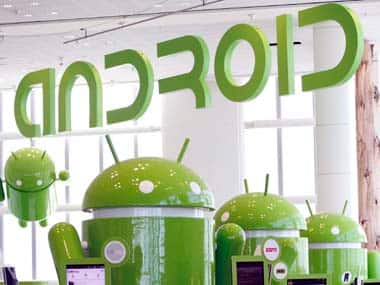Google which announced a souped up Nexus 7 tablet and a new television streaming device called Chromecast, also confirmed that Android would get an upgrade. The newest iteration of the world’s most popular mobile operating system is being called ‘Android 4.3’. So no ‘Key Lime Pie’ overhaul as yet.
The changes in Android 4.3 are relatively minor tweaks to the current Jelly Bean operating system but have been welcomed by tech analysts. Here is a quick look at what’s new:
Restricted user profiles
This feature will let users ensure that they can set up restricted access for some apps to some users. This is particularly great for parents who want to keep a tab on their kids and what they can play with on the tablet. Android 4.3 allows an app to behave differently when running in a restricted profile. For instance, the limited profiles can be used to prevent access to in-app purchases. Which means your kid won’t go around buying a lot of gems and other goodies while he/she is playing a game.
According to Google, “Each restricted profile offers an isolated and secure space with its own local storage, home screens, widgets, and settings. Unlike with users, profiles are created from the tablet owner’s environment, based on the owner’s installed apps and system accounts. The owner controls which installed apps are enabled in the new profile, and access to the owner’s accounts is disabled by default.
[caption id=“attachment_984891” align=“alignleft” width=“380”]  What’s new in Android 4.3? Reuters image[/caption]
Notification access:
Your apps can now access and interact with the stream of status bar notifications as they are posted. You can display them in any way you want, including routing them to nearby Bluetooth devices, and you can update and dismiss notifications as needed.
Bluetooth improvements
Google said that Android 4.3 will allow apps to communicate with many types of low-power Bluetooth Smart devices and sensors available today, to provide new features for fitness, medical, location, proximity, and more.
TechCrunch says that this development is key for smart watch and other wearables, as well as health and fitness trackers.
Open GL ES 3.0
This allows impressive graphics rendering photo-realism for gaming. This allows developers to put much more details such as skin texture, shadows etc on games.
The Android developer blog says, “Key new functionality provided in OpenGL ES 3.0 includes acceleration of advanced visual effects, high quality ETC2/EAC texture compression as a standard feature, a new version of the GLSL ES shading language with integer and 32-bit floating point support, advanced texture rendering, and standardized texture size and render-buffer formats.
You can use the OpenGL ES 3.0 APIs to create highly complex, highly efficient graphics that run across a range of compatible Android devices, and you can support a single, standard texture-compression format across those devices.
DRM API’s
The new DRM (Digital Right Management) APIs are aimed at helping to protect content and get higher resolution content onto the tablet. This means that Google’s new tablet will ensure that the 1080p HD quality will be supported by apps. Netflix is launching content with full HD and Nexus 7 is the first tablet to have this.
Optimized Location and Sensor Capabilities
Google Play services offers advanced location APIs that you can use in your apps. Android 4.3 optimizes these APIs on supported devices with new hardware and software capabilities that minimize use of the battery.


)
)
)
)
)
)
)
)
)



